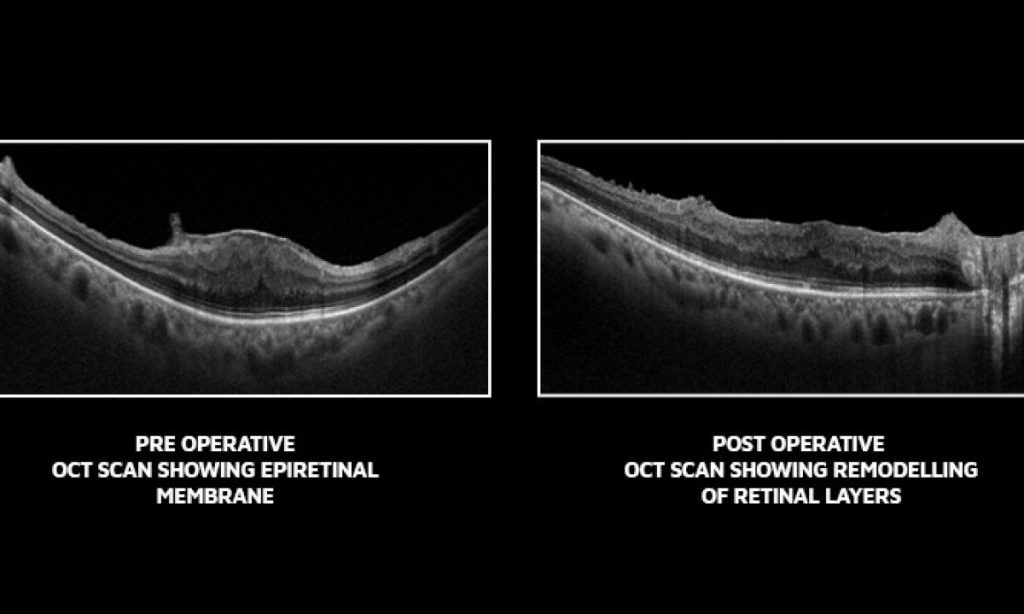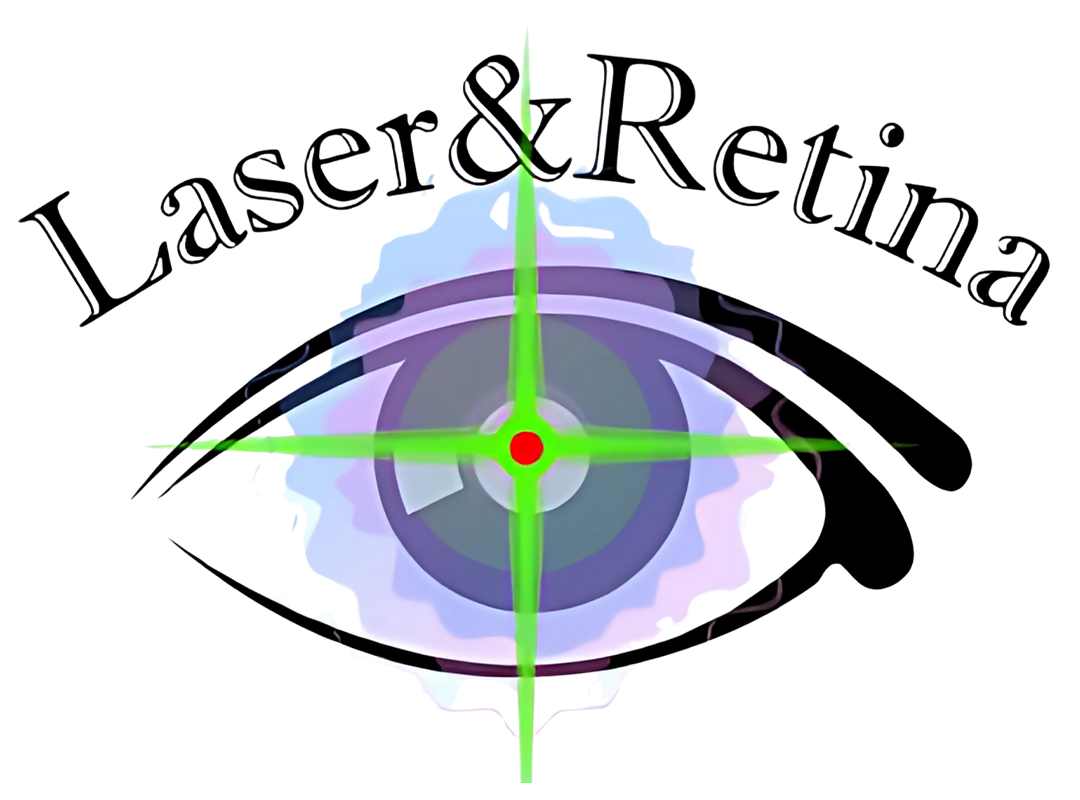Epiretinal Membrane (ERM)
Epiretinal Membrane (ERM) / Macular Pucker
An Epiretinal Membrane (ERM) — also known as a Macular Pucker — is a thin, transparent layer of scar tissue that forms on the surface of the macula, the central part of the retina.
This scar-like tissue can contract and pull on the retina, causing the surface to wrinkle or pucker. As a result, central vision can become distorted or blurred.
What Causes a Macular Pucker?
Most commonly, a macular pucker happens with aging, when the clear gel inside the eye (called the vitreous) pulls away from the retina. This can cause microscopic damage, and the retina responds by forming a thin layer of scar tissue.
Other Possible Causes:
- Retinal tears or detachment
- Inflammation inside the eye (uveitis)
- Diabetes-related eye disease
- Eye trauma or surgery
Retinal Care
Symptoms of Macular Pucker
- Blurred or distorted central vision
- Straight lines may appear wavy (metamorphopsia)
- Objects may look smaller than they are
- Difficulty reading or seeing fine detail
- Vision is usually not painful, and side (peripheral) vision remains normal
How Is It Diagnosed?
Your eye doctor may use:
- Dilated eye exam
- OCT scan (Optical Coherence Tomography) – a detailed scan that shows the wrinkling or thickening of the macula
- Sometimes a fluorescein angiogram may be done to rule out other retinal problems
Treatment Options
Mild Cases:
- Often, no treatment is needed.
- If vision is only slightly affected, doctors may monitor it with regular checkups.
Moderate to Severe Cases:
- Vitrectomy surgery with membrane peeling is the standard treatment.
- This delicate procedure removes the scar tissue to flatten the macula and improve vision.
Note: Vision may not return to perfect, but many patients notice significant improvement after surgery.
Daily Life & Monitoring
- Use an Amsler Grid at home to check for vision changes
- Get regular eye exams
- Use low-vision aids if needed
Frequently Asked Questions
A macular pucker is scar tissue on top of the macula. A macular hole is an actual opening in the retina.
Glasses can’t correct the distortion caused by the membrane, but may help with general focus.
Many people live with mild symptoms without needing surgery.
Rarely, but yes — a new membrane can form again in some patients.
OCT Scan Showing Epiretinal Membrane

Patient Guide Download
Want to read more? Download this trusted guide from the National Eye Institute:
Epiretinal Membrane (ERM)
Macular Pucker: Vitrectomy Surgery
Vitreomacular Adhesion: Medication Injections
